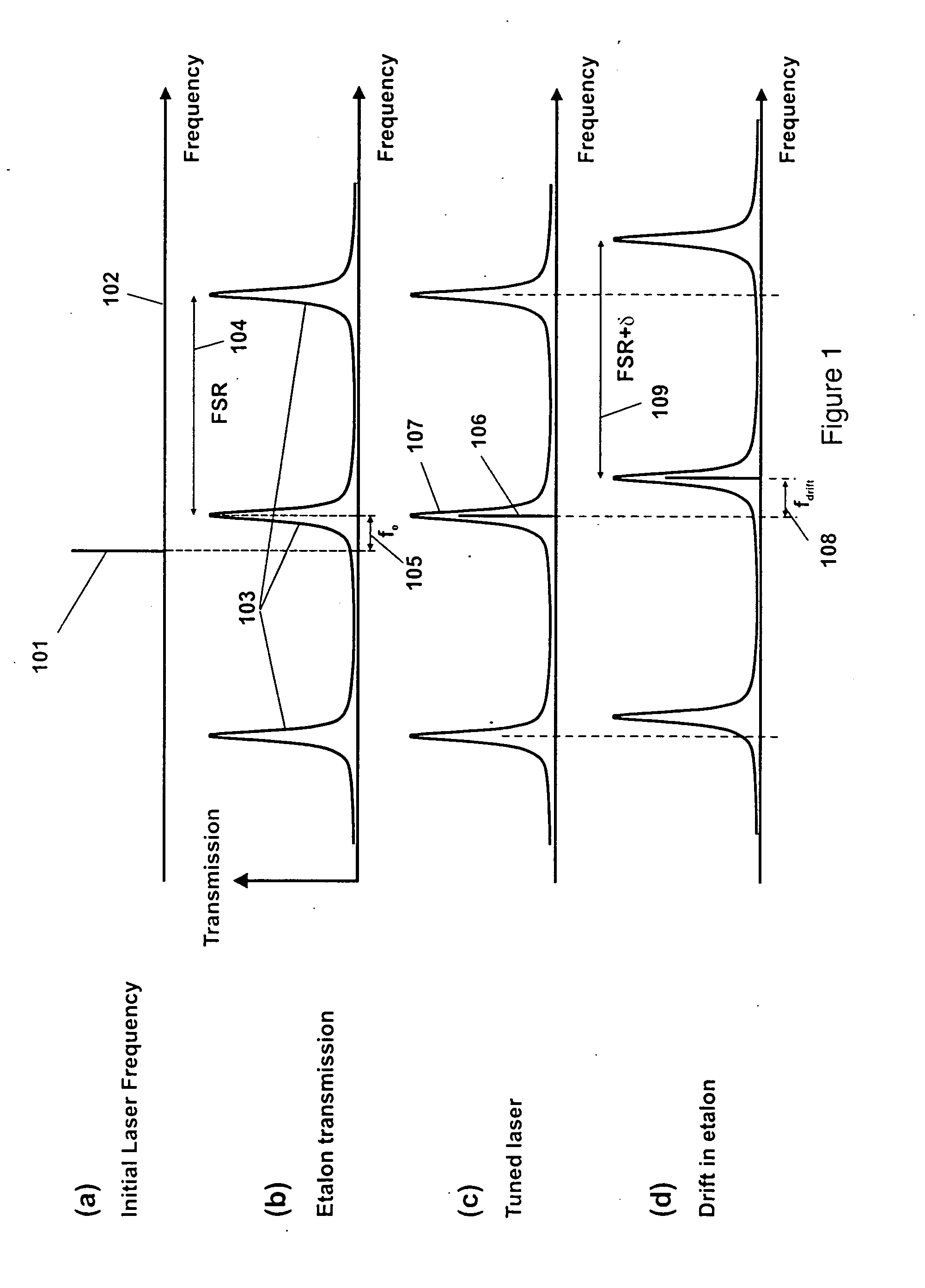Apparatus and method for stabilizing the frequency of lasers
- Summary
- Abstract
- Description
- Claims
- Application Information
AI Technical Summary
Benefits of technology
Problems solved by technology
Method used
Image
Examples
Embodiment Construction
[0020] We now describe the invention with reference to the attached figures. In FIG. 1(a) (Prior Art) is shown the position of a laser frequency 101 along a frequency axis 102, as is produced by any single longitudinal mode laser. Without any controls nothing prevents the laser from drifting back or forth along the frequency axis by an amount that generally varies depending upon the type of laser involved. In the absence of a reference against which the laser frequency can be compared, it is even impossible to say whether the position of the laser frequency is correct or incorrect. Clearly, if one produces multiple such lasers that drift independently one has little or no control over their absolute frequencies and consequently differences in frequency between them.
[0021] Even in cases where the mean position of the laser is relatively stable, small disturbances cause the frequency to jitter, which introduces an uncertainty in the frequency at any given time. It is to minimize this...
PUM
 Login to View More
Login to View More Abstract
Description
Claims
Application Information
 Login to View More
Login to View More - R&D
- Intellectual Property
- Life Sciences
- Materials
- Tech Scout
- Unparalleled Data Quality
- Higher Quality Content
- 60% Fewer Hallucinations
Browse by: Latest US Patents, China's latest patents, Technical Efficacy Thesaurus, Application Domain, Technology Topic, Popular Technical Reports.
© 2025 PatSnap. All rights reserved.Legal|Privacy policy|Modern Slavery Act Transparency Statement|Sitemap|About US| Contact US: help@patsnap.com



